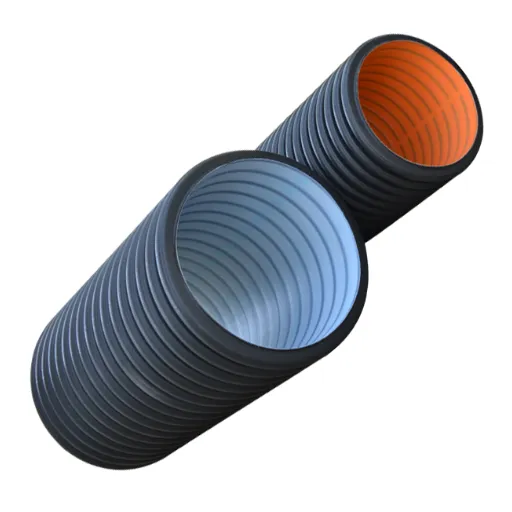High-Density Polyethylene (HDPE) pipes remain an industrial staple owing to their superior durability, flexibility, and environmental resistance. With those industrial sectors demanding piping solutions that are both dependable and economically feasible, one must consider the advantages and uses of HDPE pipes. This article will concentrate on the innovation brought about by the manufacturers of HDPE pipes to provide solutions in piping systems that are superior in quality and designed to meet the rigid standards of the industries. From water supply, gas distribution, to industrial fluid transportation, we shall show how HDPE pipes have taken infrastructure to a new dimension worldwide. Stay glued to unearth why HDPE pipes are the industry choice for long-term applications.
Understanding HDPE Pipes
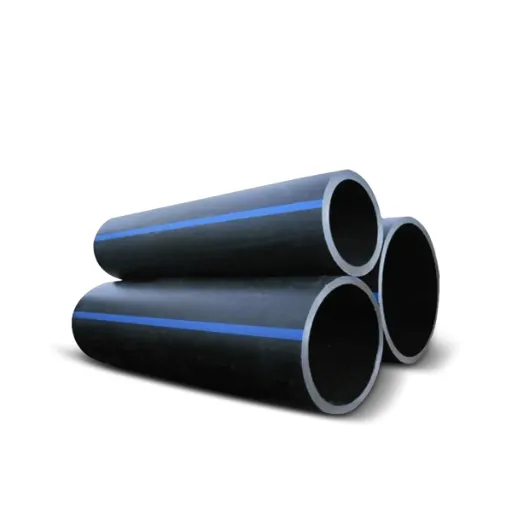
What is HDPE?
Piping services of some kind are the main application for this polymer, with high-density polyethylene being characterized by high strength-to-density parameters. High-density polyethylene goes through a process of injection molding and is then formed into pipes. It is tough, and it can endure both high and low temperatures and corrosive chemicals, and stress from the environment.
Other properties of HDPE make it less susceptible to cracking when impacted, especially under harsh situations with long-term reliability and maintenance. Compared to pipes made from conventional materials like steel or concrete, HDPE pipes are lighter in weight; hence, they are somewhat more comfortable if handled and installed. The flexible nature of the piping material allows it to accommodate variation in the landscape, such as shifting soil or uneven terrain, without loss of performance.
The maximum use of HDPE takes place in water and gas distribution, sewage systems, and industrial fluid transportation, mainly due to its non-toxic nature and minimal environmental impacts. In addition, it can be recycled, which endorses it as an environmentally friendly material for infrastructure development. In brief, HDPE in today’s infrastructure development stands for effective, durable, and cost-effective solutions.
Properties of High-Density Polyethylene
High-density polyethylene (HDPE) has a superior strength-to-density ratio and, hence, is lightweight but durable. It is formed out of petroleum via polymerization and comprises high molecular weight chains that provide resistance to mechanical stress.
Key Technical Properties:
- Tensile Strength: 20 to 37 MPa
- Melting Point: ~130°C (266°F)
- Operating Temperature: -40°C to 60°C
- Water Absorption: Less than 0.01%
In the chemical arena, HDPE possesses very notable properties. It hardly reacts with acids, bases, and solvents, providing it with long-term stability when used for charging different kinds of liquids, some of which may be corrosive. This resistance also extends to stress factors arising from the environment, as HDPE is stable to UV rays and resistant to oxidation, realizing that the performance of the materials will remain steady with long-term exposure to sunlight or any other unfavorable condition.
Benefits of Using HDPE Pipes
HDPE pipes resist corrosion, biological growth, and chemical degradation, with a service life of 50-100 years during normal operating conditions. So, from the perspective of the infrastructure costing point of view, such a pipe is very affordable, considering it requires little maintenance for long-term performance.
The inherent flexibility in HDPE pipes enables them to be fractured or leak when ground movements occur, be it due to an earthquake or any soil displacement event. This also makes installing HDPE pipes a simple process associated with trenchless technologies, such as horizontal drilling.
With an almost perfectly inert inner surface (coefficient of friction around 0.009, and C factor near 150 for Hazen-Williams), HDPE pipes offer the utmost resistance to fluid flow. This helps in minimizing pumping energy consumption and lowers operational costs over the lifespan of the pipe.
Being lightweight in nature when compared with materials such as concrete or steel, transport costs are minimized, while handling during installation is simple. Ultimately, these factors greatly accelerate project completion and diminish labor requirements on-site.
These pipes stand for a nontoxic environment and are completely recyclable in their life cycle. And they enjoy the advantage of causing fewer CO2 emissions during their production relative to traditional pipe materials, thus supporting sustainable construction and environmental norms.
Manufacturing Process of HDPE Pipes
Raw Materials Used in HDPE Production
Depending largely on the polyethylene resin, the HDPE pipe finds its material of production. This resin is a petrochemical product, derived mostly from ethylene byproduct coming from natural gas or crude oil refining. Now the ethylene gets polymerized, which is an act of chemically binding small molecules into long chains to form polyethylene. Choosing high-grade virgin polyethylene resin is necessary to impart good mechanical properties and chemical resistance, which are critical factors affecting HDPE pipe performance in a variety of applications.
| Raw Material | Purpose | Properties Enhanced |
|---|---|---|
| Polyethylene Resin | Primary material | Strength, flexibility, and chemical resistance |
| Antioxidants | Prevent degradation | Heat resistance, longevity |
| UV Stabilizers | Protect from sunlight | UV resistance, color stability |
| Carbon Black | Pigment & protection | UV resistance, durability |
| Processing Aids | Manufacturing efficiency | Surface smoothness, uniform thickness |
Step-by-Step Manufacturing Process
- Feedstock Preparation: The HDPE manufacturing industry starts with feedstock preparation, essentially either natural gas or petroleum-ethylene. Hence, these hydrocarbons are treated for purification to eliminate contaminants, thereby getting an input of good raw material.
- Catalyst Integration: The polymerization of the raw material employed is facilitated by the use of catalysts like metallocene or Ziegler-Natta catalysts. The metallocene catalyst, above all, controls the architecture of polymer chains in a very precise manner, whereby this polymer architecture determines the molecular weight and also the density of the final HDPE product.
- Polymerization: Within a high-pressure reactor, polymerization is carried out, traditionally involving slurry-phase polymerization in cooled polymerization units under pressures between 7-17 atmospheres or sublimation polymerization in gas-phase polymerization units under pressures varying from 2-6 atmospheres, with solution-phase polymerization forming another option.
- Separation and Recovery: Unreacted ethylene is separated, recovered, and recycled back into the reactor if possible. By-product removal is therefore carried out with maximum diligence to reduce wastes and maintain sustainability.
- Pelletization: Here, the polyethylene resin is cooled and extrusion-molded into long strands, which are cut into granular pellets of uniform size. The pellets are the modes through which HDPE is generally supplied to manufacturers for usage in subsequent applications.
- Quality Control and Testing: Rigorous tests determine whether the HDPE passes certain criteria. The parameters tested include density, tensile strength, flexibility, stress crack resistance, and other properties to meet the industrial standards.
Applications of HDPE Pipes
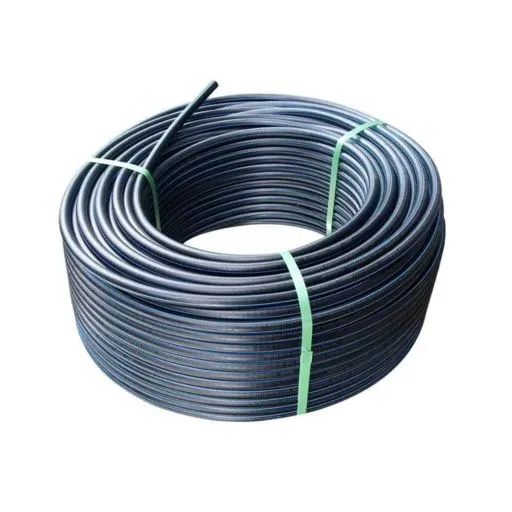
HDPE Pipes in Water Distribution
HDPE pipes figure largely in the modern water distribution systems for their durability, flexibility, and cost-effectiveness. They are built to resist high pressure from the pipe flow, being both corrosion-resistant and leak-proof, thereby enhancing the efficiency of transporting potable and non-potable water.
- Municipal Water Supply Systems: HDPE pipes are commonly used in municipal water systems for distribution points of drinking water. They protect water from chemical and biological contamination while flexing with installation on various terrains.
- Irrigation Systems: Agricultural irrigation activities are carried out using HDPE pipes because of their lightweight nature with high tensile strength. It supports drip irrigation and sprinkler irrigation systems in order to promote efficiency in water consumption and minimize wastage.
- Underground Water Pipelines: Being capable of enduring environmental stresses like soil movement and vibration, HDPE pipes are best suited as underground water pipelines, where durability is of the essence.
- Stormwater Drainage Systems: HDPE pipes facilitate the movement of stormwater efficiently, given their high flow rate and erosion resistance. Being able to handle huge amounts of water makes these pipes most suitable for fighting flood risks in urban settings.
- Desalination Plant Pipelines: At desalination plants, HDPE pipes serve to carry brackish or seawater to treatment plants. Because of their corrosion resistance, such pipes promise long-term performance in saline scenarios.
Uses in Agriculture and Irrigation
HDPE pipes have an essential role in any modern agricultural or irrigation system due to their durability, flexibility, and cheapness. When it comes to water distribution, they deliver superior services, so agriculture can reach its full potential.
- Efficiency Note: Drip irrigation using HDPE pipes can reduce water use by up to 50% compared to traditional irrigation methods.
- Drip Irrigation Systems: HDPE pipe modules are most used in drip irrigation systems to supply water directly to the root zone of the plants. This ultimately reduces water wastage while output enhancement is realized through the efficient delivery of water.
- Sprinkler Irrigation: Sprinkler irrigation systems are supported by HDPE pipes. These dispense water evenly over much agricultural land. Their ability to withstand sudden changes in pressure makes them reliable for providing a constant flow of water necessary for field crops and pastures.
- Mainline Water Delivery: Water volumes are very high going through HDPE pipes from reservoirs/wells/rivers to farmlands. Lightweight construction of these pipes minimizes the costs involved in transportation and installation of these pipes over long distances.
- Application of Fertilizer and Pesticide: Increasingly, these pipes are used for the integration of fertigation and chemigation systems, allowing for the direct delivery of fertilizers and pesticides through irrigation water. This reduces the costs associated with the application and increases efficiency.
- Drainage Systems: For agricultural drainage systems, the HDPE pipes remove excess water from fields. This drainage provides aeration to the soil so that it does not become waterlogged, thus supporting crop growth.
Construction and Infrastructure Applications
Due to their tensile strength, flexibility, and ability to resist environmental stress, an important array of HDPE pipe applications in construction and infrastructure development projects is seen.
- Water Supply Systems: HDPE pipes have been extensively utilized in indispensable potable water distribution systems owing to their resistance to corrosion, chemical reactions, and leakage. Providing seamless connections, a proper hygienic water supply is ensured over an extended period.
- Sewer and Waste Management: Being resistant to chemicals and abrasions, HDPE pipes are used in sewer pipelines and wastewater treatment plants. They have the smoothest inner surface to avoid blockages and keep the flow rates high while maintaining low costs for maintenance.
- Natural Gas Transmission: Due to its high-pressure handling capability and resistance to cracking by environmental forces, HDPE pipes are used for natural gas distribution systems that ensure safe and functional gas transport.
- Stormwater Drainage Systems: In an urban environment, HDPE pipes are used for stormwater management. The load-bearing characteristics allow them to resist the weight of roadways and buildings while carrying rainwater away from sensitive infrastructure.
- Industrial Cable Conduits: HDPE pipes serve as protective conduits for electrical and communication cables in industrial and urban environments. They provide longevity and safety to the enclosed cables by way of their insulating qualities and resistance to environmental degradation.
Installation and Fitting of HDPE Pipes
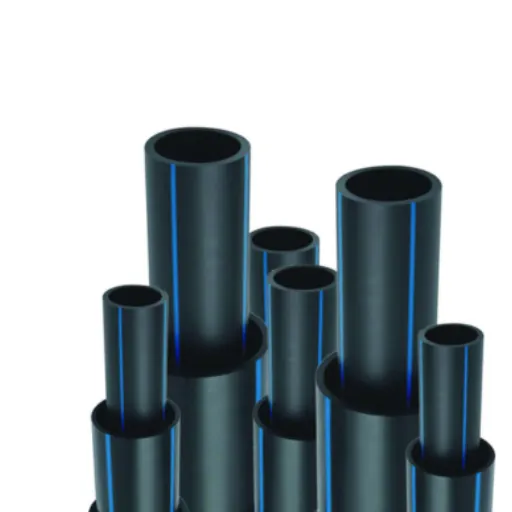
Types of Fittings and Their Uses
HDPE piping systems rely on different types of fittings to maintain secure connections, allow for versatility, and promote durability in a myriad of applications.
| Fitting Type | Method | Best Applications | Key Benefits |
|---|---|---|---|
| Butt Fusion Fittings | Controlled fusion | Water distribution, gas pipelines | Leak-proof, homogeneous joint |
| Electrofusion Fittings | Electric heating elements | Repairs, complex installations | Precise welding maintains alignment |
| Compression Fittings | Mechanical connection | Low-pressure irrigation | Quick installation, no special tools |
| Socket Fusion Fittings | Heat insertion | Residential water supply | Fast, reliable connection |
| Flange Adapters | Mechanical joining | Industrial systems | Connects different materials |
| Tee and Wye Fittings | Various methods | Wastewater, drainage systems | Multi-directional connections |
Fusion Techniques for HDPE Pipes
Fusion techniques very much guard the structural integrity of HDPE piping systems, so those systems can work for a long time. Three primary methods operate: butt fusion, electrofusion, and socket fusion.
- Butt Fusion: This is the most common method, wherein the ends of the two HDPE pipes are heated until they come to a molten state. The softened ends are then brought into contact and pressed together under a predetermined force until an entirely homogeneous seal is formed. The technique is used mostly for large diameter pipes in water supply and gas systems.
- Electrofusion: Electrofusion makes use of very special fittings that are embedded with metal coils, which provide localized heating when electric current is passed through them. This is an ideal option where there is limited working space or where precision is required-for instance, in repairing pipelines or joining pre-existing systems.
- Socket Fusion: Here, the pipe is inserted into the heated socket so that its surface is softened while the fitting is being melted inside. While cooling down, the two are held tightly together. The method is best suitable for smaller diameter pipes and is most widely employed in plumbing and small industrial uses.
Sustainability and Environmental Impact
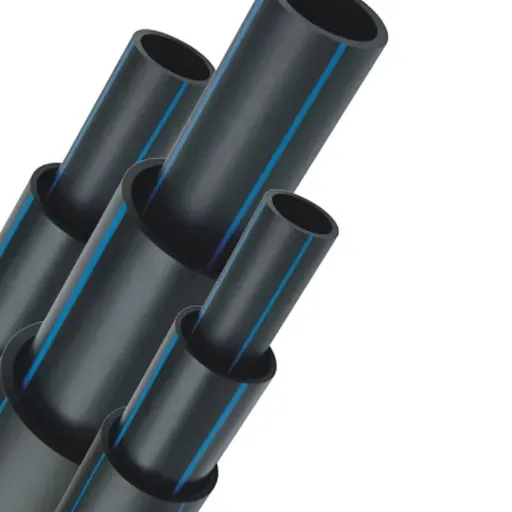
Recyclability of HDPE Pipes
HDPE pipes are among the environmentally sustainable choices due to their great recyclability. These pipes could be recycled into a miscellaneous array of products, which include but are not limited to new piping systems, plastic lumber, and other industrial components. Since this thermoplastic material simply melts when heated and is then allowed to cool in any shape, recycling incurs little or no waste during either production or disposal.
Recycling HDPE and putting it back into new piping minimizes the use of raw materials while also lowering the amount of energy used and greenhouse gases that can come from manufacturing virgin plastic. This makes HDPE pipes a green solution for waste reduction and for switching to a circular economy.
Long Lifespan and Reduced Environmental Impact
Being well known for long life, HDPE pipes can last 50 years or more under favorable conditions, thereby saving cost on frequent replacements. This longevity can minimize the generation of waste, thereby lessening the adverse impact caused by transportation, installation, and manufacturing.
- Corrosion Resistance: Unlike corrosion in steel and rusting in iron, HDPE pipes do not undergo chemical corrosion or rusting. This adds to minimizing maintenance and the chances of water contamination in water distribution systems.
- Energy-Efficient Production: Less energy is used in the production of HDPE pipes, and consequently, the carbon emissions are reduced in manufacture.
- Light Weight: Due to its being light, fewer emissions result during transportation for HDPE pipes, which, along with the light weight, ease their installation, thereby having less bearing on the environment.
- Recyclability: HDPE is totally recyclable. HDPE pipes may be recycled into new pipes or other plastic products at the end of their life, hence contributing to a circular economy.
- Leak-Free Joints: Heat fusion joins HDPE pipes to make leak-proof systems with high reliability. Water loss is thus reduced, ensuring resource efficiency in municipal and industrial water systems.
The Role of Carbon Black in Enhancing Durability
Carbon black is a crucial factor in pipe durability and greater performance in HDPE. Carbon black is a very fine black powder with mostly elemental carbon; it is introduced into the HDPE formulation to impart specific properties that guarantee the final product’s durability under adverse application circumstances.
Carbon Black Benefits:
- UV Resistance: Can resist sunlight for more than 50 years without considerable degradation
- Thermal Stability: Maintains structural integrity under varying temperature conditions
- Increased Tensile Strength: Greater resistance to mechanical forces and pressures
- Environmental Stress Cracking (ESC) Resistance: Enhanced operational reliability in chemically aggressive environments
- Abrasion Resistance: Excellent for conveying abrasive materials like slurries and sands
Frequently Asked Questions (FAQ)
A: An HDPE pipe manufacturer specializes in the production of high-density polyethylene pipes for a variety of uses, such as water lines, oil and gas distribution, and telecommunication. Such companies make use of state-of-the-art manufacturing plants for the extrusion of quality HDPE pipes that will comfortably meet the demanding standards of the industry.
A: HDPE pipes are highly durable and flexible while resisting corrosion. They are light and have high thermal conductivity of heat, so they find their usage in many applications such as water mains and distribution applications. Also, these pipes can be fabricated very easily at any site to obtain the specific size and length requirements.
A: HDPE pipes are fabricated through a process called extrusion. In this process, a polyethylene compound is melted and forced through a die of a particular shape to produce the pipe. Then the hot pipe is cooled, cut to length, and is frequently subjected to thorough inspection by the manufacturers to ensure that it meets all specifications and quality standards.
A: A reputable HDPE pipe manufacturer should carry certifications from acknowledged organizations such as PPI (Plastic Pipe Institute) and FM approvals. These certifications assure that the highest quality standards are met by the manufacturer and affirm that their products are truly suitable for various applications, including directional drilling and water lines.
A: HDPE pipes are available in different sizes and, depending on size, may have one very general application or another. Water mains, oil and gas pipelines, and telecoms are all examples. The manufacturers have a size chart that specifies the various sizes so that the distributors and customers can select the proper pipe for their needs as per IPS (Iron Pipe Size) and CTS (Copper Tube Size) specifications.
A: Choose the right HDPE pipe by defining your particular type of application, the length you require, and the specifications of the pipe. With some good understanding and knowledge, a good HDPE pipe distributor or manufacturer would be able to tell you which product would be suited to your particular needs.
A: HDPE pipes are manufactured for a long service life, which may exceed 50 years with proper installation and maintenance. Corrosion resistance and minimal maintenance make them last longer in various applications, such as water lines and oil and gas distribution.
A: Yes, HDPE pipes are considered to be environmentally friendly since they can be recycled and have longer lives. It is also possible to cut waste during the manufacturing process. Besides, HDPE pipes do not release toxic chemicals. Hence, they are safe to be used in potable water.
A: Generally, there is some sort of planning involved in the shipping and distribution of HDPE pipes so that they are timely delivered across the United States to customers. Manufacturers contracted with distributors to keep inventory and manage the transportation of finished pipes into numerous locations so that there are no project delays.
References
- University of Minnesota: Evaluation of Corrugated HDPE Pipes Manufactured With Recycled Content- Research aimed at comparing the performance of HDPE pipes manufactured with recycled content.
- South Dakota State University Extension: Welded Connections and Shallow Bury Pasture Pipe- Talks about the applications of HDPE pipe in water delivery systems.
- Central Tech: Polyfusion Training- Deals with the welding and manufacturing certifications and standards of HDPE pipe.
- University of Texas at Arlington: Investigation of Durability and Reliability of HDPE Pipe- Studies the durability and reliability of large diameter HDPE pipe.



